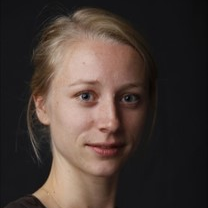Art Markets and Digital Histories
A special issue of Arts (ISSN 2076-0752).
Deadline for manuscript submissions: closed (31 January 2019) | Viewed by 66353
Special Issue Editors
Interests: early modern and modern cultural industries; art markets; urban history; arts and culture; digital humanities
Special Issue Information
Dear Colleagues,
This Special Issue of Arts investigates the promises and pitfalls of current digital methods in studying the history of art markets. New technologies are becoming integral to research in the humanities and social sciences and this invites a reflection on the use of these methods and techniques in art market studies. Our aim is to explore the different strategies that scholars employ to navigate and negotiate digital techniques and data sources, particularly when combining different datasets and types. Furthermore, the wealth of digitized historical data on objects and agents in art markets is rapidly expanding, and this data is increasingly published as Linked Open Data. Two recent historiographical trends make the use of Linked Data particularly relevant to art market studies.
First of all, the history of art markets has since long been studied through economic, social, and cultural lenses. While some scholars opt for the one or the other, others try to integrate them through the topics of, for instance, intermediaries, market mediation, and valuation processes. Open access to digital assets from art museums, archives, and libraries provide the opportunity, in the form of linked data and combined sources, to test cross-overs between research domains and thereby expand our understanding of art markets as socio-cultural as well as economic phenomena. But translating the promise of Linked Data into actual conceptual leaps in the field requires careful design of data models and methodologies.
The second trend also concerns the boundaries of the art market, but on a spatial level. The geographical reach of historical art market studies has been extended beyond Europe and the United States to include Latin America, Asia, the Middle East, and Australia. At the same time, scholars have developed increasing interest on themes such as cross-border trade and networks, global vs. national vs. local, and migration and mobility patterns. In theory, digitization and linked data provide excellent opportunities for advanced cross-border and comparative analyses, but in practice it has proven difficult to systematically link or compare data across borders and languages.
For this issue, we seek contributions that present a historical research question relevant to art market studies. We are particularly interested in contributions that reach out to other domains (be they time, place, or societal), and that place emphasis on combining and using multiple sources or data types (linked or not linked). There are no limitations as to place or time, as long as the papers are explicit on their research processes with regards to data, techniques and methods.
A wide range of topics will be suitable for this Special Issue and might include (but are not limited to) the following:
- collecting practices
- consumption patterns
- art as investment
- intermediaries
- art dealers and auctions
- new technologies
- galleries
- fairs
- ...
Please send a 200-word proposal and CV to Claartje Rasterhoff ([email protected]) and Sandra van Ginhoven ([email protected]) by 15 June 2018.
Please note that there is a two-stage submission procedure. We first collect abstracts of 200 words by 15 June 2018. Before 15 July, we will invite selected abstracts to be submitted as full papers for peer review by 1 December 2018. Journal publication is expected in March or June 2019, depending on the revision time needed after peer review.
Dr. Claartje Rasterhoff
Dr. Sandra van Ginhoven
Guest Editors
Manuscript Submission Information
Manuscripts should be submitted online at www.mdpi.com by registering and logging in to this website. Once you are registered, click here to go to the submission form. Manuscripts can be submitted until the deadline. All submissions that pass pre-check are peer-reviewed. Accepted papers will be published continuously in the journal (as soon as accepted) and will be listed together on the special issue website. Research articles, review articles as well as short communications are invited. For planned papers, a title and short abstract (about 100 words) can be sent to the Editorial Office for announcement on this website.
Submitted manuscripts should not have been published previously, nor be under consideration for publication elsewhere (except conference proceedings papers). All manuscripts are thoroughly refereed through a double-blind peer-review process. A guide for authors and other relevant information for submission of manuscripts is available on the Instructions for Authors page. Arts is an international peer-reviewed open access semimonthly journal published by MDPI.
Please visit the Instructions for Authors page before submitting a manuscript. The Article Processing Charge (APC) for publication in this open access journal is 1400 CHF (Swiss Francs). Submitted papers should be well formatted and use good English. Authors may use MDPI's English editing service prior to publication or during author revisions.
Keywords
- art market
- digital histories
- collecting practices
- consumption patterns
- art as investment
- intermediaries
- art dealers and auctions
- new technologies
- galleries
- fairs
Benefits of Publishing in a Special Issue
- Ease of navigation: Grouping papers by topic helps scholars navigate broad scope journals more efficiently.
- Greater discoverability: Special Issues support the reach and impact of scientific research. Articles in Special Issues are more discoverable and cited more frequently.
- Expansion of research network: Special Issues facilitate connections among authors, fostering scientific collaborations.
- External promotion: Articles in Special Issues are often promoted through the journal's social media, increasing their visibility.
- e-Book format: Special Issues with more than 10 articles can be published as dedicated e-books, ensuring wide and rapid dissemination.
Further information on MDPI's Special Issue polices can be found here.






